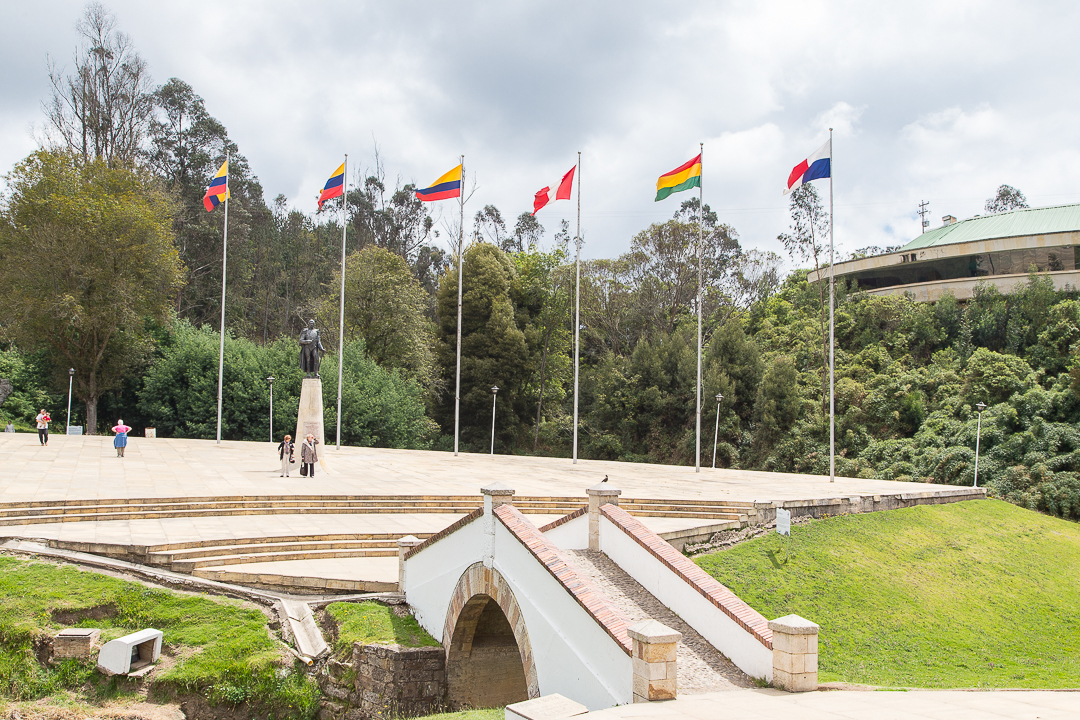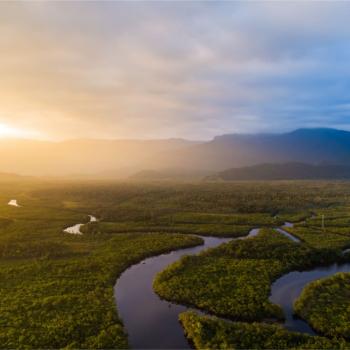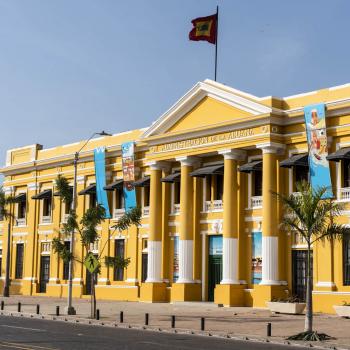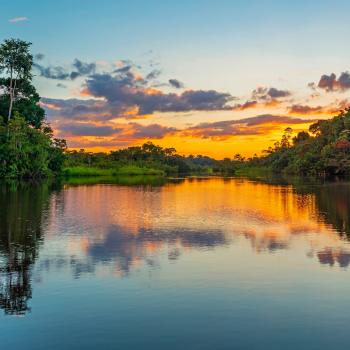The green landscapes that surround the road leading from Bogotá to Tunja seem to be taken from the mix of colors on a painter's palette. These fertile lands, abundant in valleys and gently rolling mountains, are home to the capital of the department of Boyacá. The city was founded on August 6, 1539, a year after Bogotá, on a Muisca indigenous settlement.
A stellar protagonist in the history of the formation of the republic, in Tunja and its surroundings numerous politically and militarily significant events occurred that forged the country's independence, to the point where the leaders of the time considered establishing it as the nation's capital.
The cultural importance of the city is intertwined with the beautiful landscape and the hospitality and determination of the people of Boyacá. This synergy is the perfect excuse to plan a few days of rest and a tour of historic places rich in architecture and art. Tunja has the most extensive colonial treasure in Latin America.
Arriving in Tunja
Before arriving by land to Tunja, from Bogotá, there is an emblematic place of this city: the Puente de Boyacá, a monument declared Cultural Heritage of the Nation and located in the so-called Campo de Boyacá.
You might also be interested in: Discover Equestrian Tourism in Colombia
The final battle of the war for independence, the Battle of Boyacá, was fought there on August 7, 1819. There, on the small river of Boyacá or Teatinos, the country’s freedom and sovereignty were achieved.
In memory of the bridge that once stood there, a larger one was built for symbolic purposes to always remember the bravery of our soldiers. Fourteen kilometers separate Tunja from this rest stop, where you can take the opportunity to visit different monuments and places. The Bolívar Monument, the Arch of Triumph, the circular building or Cyclorama, the Obelisk of Freedom, the Plaza of Flags, the Casa de Teja, the bust of Colonel Cruz Carrillo, and the monument to Pedro Pascacio Martínez will offer you beautiful patriotic images to photograph and take home.

The Historic Center
The Historic Center is ideal for walking and soaking up the city. Declared a National Monument for its extraordinary beauty filled with colonial architecture, period mansions alternate with imposing 16th-century churches.
In fact, Tunja is enveloped in a mystical mist in a pleasant climate that charms visitors. For religious tourism enthusiasts, the capital of Boyacá is home to fourteen large churches that are true architectural jewels of the colonial era; Catholic temples of singular beauty.
First is the Cathedral Church of Tunja, in Gothic and Neoclassical style, which is the oldest in the country (1562). The Metropolitan Basilica Cathedral Santiago de Tunja is located in the heart of the Historic Center in the Plaza de Bolívar and is dedicated to the Apostle Santiago the Greater. With a single tower and three naves, this temple was declared a National Monument in 1959.
Some of the 14 colonial chapels and churches you should not miss are:
- The Chapel and Museum of Santa Clara la Real. Built in 1571, as part of the first enclosed convent of New Granada, which included the writer Francisca Josefa del Castillo, whose remains rest there. More than eighty invaluable art objects, including collections of oil paintings on canvas by important artists such as Vázquez and Ceballos, Angelino Medoro, and Francisco Di Pozo, rest on the walls of the museum today. Wooden carvings and altarpieces covered with gold leaf are part of this beautiful cloister whose scarlet Mudejar latticework tells the story of the importance of the place.
- The Church of Santo Domingo, where the Chapel of the Rosary is located, is a colonial jewel. Considered the "Sistine Chapel of Latin America" for its great beauty and the richness of the art that composes it, this chapel in which scarlet and gold colors stand out, is one of the most important on the continent. Upon entering the three-nave temple, built in 1560, visitors are surprised by the ornate artistic display, including the altarpiece, the mural paintings of the life of Santo Domingo, and the wood carving covered with gold leaf, a legacy of Hispanic Baroque that cannot be missed.
- The Church of Our Lady of the Miracle of Topo, is a Marian sanctuary dedicated to the Patroness of Tunja, where a beautiful canvas from 1628 is displayed.
- The Church of Our Lady of the Snows, San Francisco, the Convent of San Ignacio, the Church of Santa Bárbara, the Cloister of the Society of Jesus, the Cloister of San Agustín, and the Hermitage of San Laureano, among others, are part of this tour of the city center, which can be done on foot while enjoying the delicious cuisine of Boyacá in the cafes and restaurants located in the area.
Now, if colonial architecture excites you, the tour of Tunja continues with a visit to the Museum Casa del Fundador Gonzalo Suárez Rendón, where the Secretariat of Culture and Tourism of the Mayor's Office of Tunja is located.
This beautiful mansion, built by more than three thousand indigenous people, is an example of the way of life of the 16th-century Tunja aristocracy. This place was the epicenter of political and social meetings of the high society of the time and is the only house of a Founder preserved in Hispanic America. Numerous conquerors stayed there.
A visit to history
Tunja, in addition to being the cradle of the country's freedom, was also the cradle of the ancient Muisca population known as Tchunza, which translates to "strong man." In this territory, the Zaques, rulers of the place who were considered sons of the Sun, were worshipped.
From this pre-Columbian era, the so-called "Cushions of the Zaque" or Sanctuary of the Zaque of Hunza, a monument consisting of two monoliths carved by the Muiscas from a large stone in the mountain, are preserved on the mountain of San Lázaro.
They are aligned to the east, leading to the presumption that they worshipped the sun god there and held numerous religious ceremonies. Today, they are part of the city's historical heritage and cultural heritage. Knowing this space offers the possibility of an ecological walk where contact with nature and the narration of indigenous myths by the guides will transport you to pre-Columbian times.
You might also be interested in: Villa de Leyva, a Religious, Historical and Cultural Treasure
Another sacred place for the Muiscas that you should not miss is the Pozo de Hunzaúa or de Donato, a lagoon of cold waters, surrounded by a stone path around it.
There you can enjoy the remains of the columns of the temple that the Muiscas built to the sun god. Beautiful huts that preserve the architecture of that time, adorn the place with archaeological objects found there.
One of the charms of the park is the oral tradition that tells the tragic legend about the origin of the well. According to the story, it arose from the wrath of a mother upon discovering the incestuous love of Cacique Hunzaúa for his sister.
It is also said that the indigenous people threw all their gold articles into the lagoon so that the Spaniards could not find them, and later a Spaniard named Donato ordered it to be dried without finding any figure of the precious metal.
We also recommend visiting the Archaeological Museum Park of Tunja, where the archaeological objects found throughout the Cundiboyacense highlands region are located. It is a museum worth visiting.
Adventure Tourism
Tunja is also a very sought-after destination for high-performance athletes, as its geographical location is ideal for so-called "high-altitude training". Especially cycling, since Boyacá is the cradle of the main Colombian athletes in this discipline.
Additionally, extreme sports such as rappelling, paragliding, canoeing, climbing, caving, and mountain biking are practiced in the city and its surroundings by specialized athletes who have won multiple international medals for the country.
Do not miss visiting Tunja
All these natural, historical, and cultural charms make Tunja, according to ANATO, the favorite destination for foreign visitors in seasons such as Holy Week, the birthday of the capital of Boyacá, and the celebration of the Bicentennial.
It is a noble city that surprises with a different tourist offer, whose strategic location that connects it by land with the Eastern Plains, the center of the country, and the Atlantic coast, makes it an excellent destination on the route for long vacations in Colombia.























